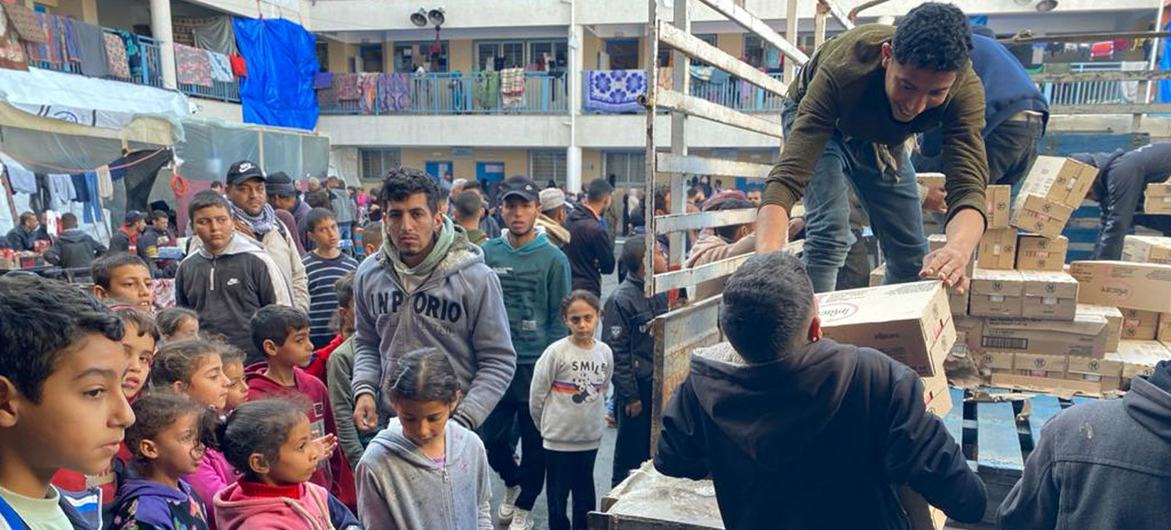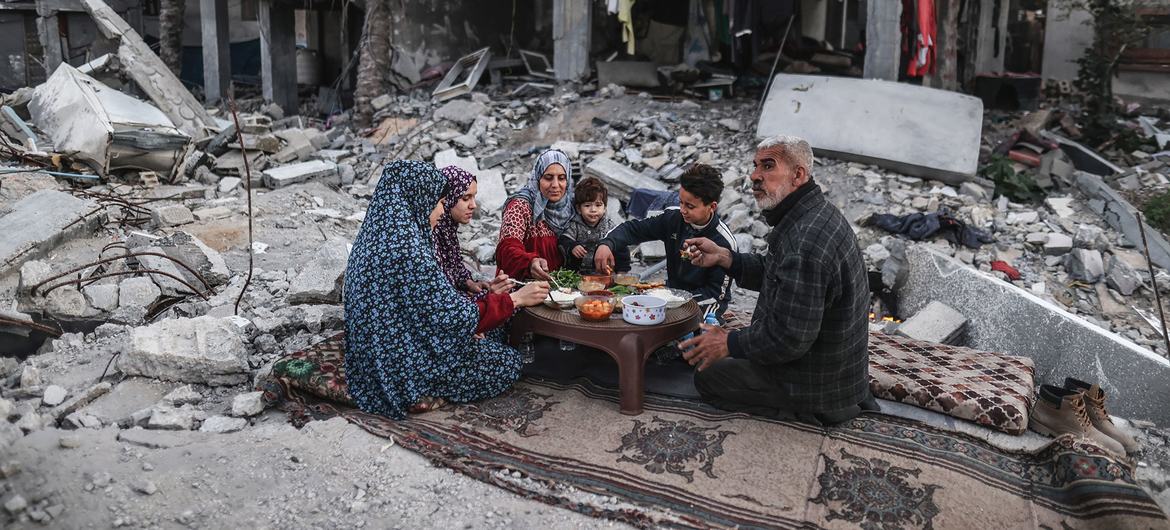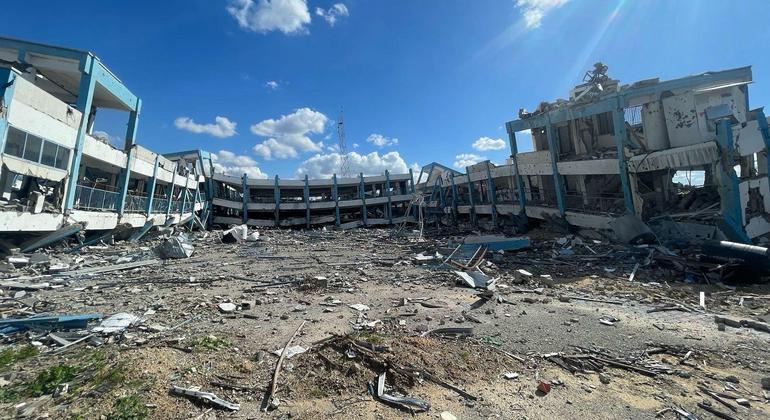Since the brutal 7 October attacks by Hamas and other Palestinian militants on southern Israel, and the ensuing military assault by Israel, over 5,800 students and teachers have been killed and a further 8,575 have been injured across the enclave.
Many others have been arrested, while attacks on places of learning have left more than 625,000 students without any ability to study.
UN schools sheltering civilians displaced from their homes have also come under fire, including some inside Israeli military-designated “safe zones”.
Hopes and dreams destroyed
“With more than 80 per cent of schools in Gaza damaged or destroyed, it may be reasonable to ask if there is an intentional effort to comprehensively destroy the Palestinian education system, an action known as ‘scholasticide’,” the experts said.
The term “scholasticide” refers to the systemic obliteration of education through the arrest, detention or killing of teachers, students and staff, and the destruction of educational infrastructure.
The experts called on all parties to respect international humanitarian law and international human rights law, and to protect educational institutions, teachers, and students.
“We remind Israel in particular of its obligations to comply with the provisional measures ordered by the International Court of Justice (ICJ) on 26 January,” they said.
Devastating long-term impacts
The experts, including UN Special Rapporteurs on the right to education and on the situation in the Palestinian Territory occupied since 1967, also warned of the far-reaching impacts of attacks on education in Gaza.
“The persistent, callous attacks on educational infrastructure in Gaza have a devastating long-term impact on the fundamental rights of people to learn and freely express themselves, depriving yet another generation of Palestinians of their future,” the experts said.
“When schools are destroyed, so too are hopes and dreams.”

A school being used as a shelter for internally displaced persons (IDPs) in Gaza.
Not isolated incidents
In addition to schools, a further 195 heritage sites, 227 mosques and three churches have also been damaged or destroyed, including the Central Archives of Gaza which catalogued 150 years of history.
Israa University, the last remaining university in Gaza was demolished by the Israeli military on 17 January.
The experts noted that without a safe place to go to school, women and girls face multifaceted risks, including increased gender-based violence.
More than one million Palestinian children in Gaza are now in need of mental health and psychosocial support and will suffer the trauma of this war throughout their lives.
“These attacks are not isolated incidents. They present a systematic pattern of violence aimed at dismantling the very foundation of Palestinian society,” the experts said.
Independent experts
The human rights experts raising the alarm included several UN special rapporteurs and members of human rights working groups.
Appointed by the UN Human Rights Council, they work on a voluntary basis, are not UN staff and do not receive a salary. They are independent from any government or organization and serve in their individual capacity.

A family in Gaza eats a meal in the midst of the rubble of their home.
UN food convoys enter Gaza from Israeli port
Meanwhile, the UN emergency food relief agency (WFP) reported that two of its convoys crossed into Gaza from Israel’s Ashdod Port, via the Kerem Shalom border crossing point.
The first convoy on Tuesday was made up of eight trucks, followed by a second seven-truck convoy on Wednesday.
In total, the World Food Programme (WFP) convoys delivered 374 metric tonnes of wheat flour, UN Spokesperson Stéphane Dujarric, told journalists in at the UN Headquarters, in New York.
“Fourteen additional [WFP] trucks are being loaded today and we hope they will depart soon,” he reported.
“WFP says the sustained use of that port – as well as a smoother movement of convoys via Kerem Shalom into Gaza – will notably reduce the waiting time for cargo to enter the Gaza Strip,” Mr. Dujarric added.
As part of the emergency response, the agency has shipped some 2,700 metric tonnes of wheat flour to Ashdod Port in southern Israel.
UN Senior Coordinator visits Gaza
In addition, Mr. Dujarric also informed journalists that Sigrid Kaag, the UN Senior Humanitarian and Reconstruction Coordinator for Gaza, has concluded another visit to the Gaza Strip.
While there, she went to Khan Younis where she witnessed the war’s impact on Palestinian civilians firsthand. She also visited a maternity ward in an International Medical Corps field hospital, as well as the Nasser Medical complex.
She spoke with the director and medical staff at Nasser about the challenges of securing entry and supplies of urgently needed medical items, Mr. Dujarric said.
“Ms. Kaag [also] went to Tel Aviv following her visit to Gaza and just concluded a meeting with Israeli Prime Minister Benjamin Netanyahu, as well as other Israeli cabinet officials,” the UN Spokesperson added.



